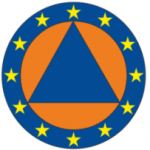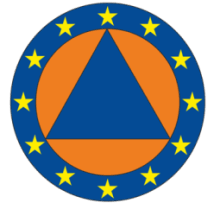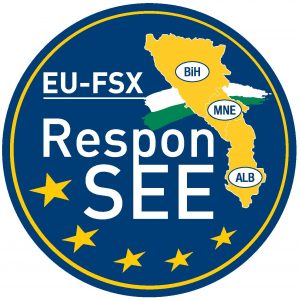UNION CIVIL PROTECTION MECHANISM
Network partnerships
(UCPM-2020-KN-AG)


Title: HEUREKA
Civil Protection Knowledge Partnership Platform Middle East

Project’s Logo
Project start:
01.01.2021
Duration:
18 months
Coordinator:
Federal Government of Styria, (AUSTRIA)
Consortium/Project’s Partners:
- Disaster Competence Network Austria, DCNA (AUSTRIA)
- Cyprus Civil Defence, CCD (Cyprus)
- European University Cyprus, EUC (Cyprus)
- Lebanon Reforestation Initiative, LRI (Lebanon)
- Urban Planning and Disaster Risk Reduction Center, Al-Anjah National
University, Nablus, ANNU (Palestine)
supporting Experts as Subcontractors of the coordinator
- Resilience Solutions International (AUSTRIA)
- D.M.A.T. Consulting KG/(AUSTRIA)
- Prepared International (GERMANY)
Background:
The risk landscape for Europe and its neighbors has been subject to significant changes over the recent years. Europe and its neighbors face a wide range of disaster risks, many of which become progressively more prevalent and urgent to tackle. These risks turn more and more often to disasters such as wildfires, floods, earthquakes, storms, heat waves, large-scale medical emergencies and technological accidents that affect increasingly higher numbers of people, infrastructure, properties, cultural heritage and the environment. Climate change further exacerbates the risks and increases the exposure to and the vulnerability of people and assets to damage. At the time of drafting this Call, the pandemic caused by the COVID19 virus is showing our vulnerabilities drastically.
The majority of disaster risks are cross-border that threaten entire regions and can affect multiple countries simultaneously. In a world that becomes increasingly interconnected risks also tend to become cross-sectoral touching upon various thematic disciplines at once.
Union Civil Protection Mechanism Knowledge Network:
The UCPM Knowledge Network[1] was established through the revised Union Civil Protection
Mechanism legislation and it is foreseen as a platform for better data collection, increased flow of information, innovation, improved sharing of knowledge, expertise and skills and consolidated scientific evidence through cooperation, partnership and networking.
Vision: strengthening the effectiveness and efficiency of the collective civil protection and disaster management efforts in all phases of the disaster cycle.
Mission: bringing together civil protection and disaster management actors and institutions to improve the overall knowledge situation and foster the disasters.
[1] ec.europa.eu/echo/what/civil-protection/knowledge-network_en
Objectives:
The Civil Protection Knowledge Partnership Platform Middle East will bridge across knowledge holders relevant to disaster management actors, to enhance coordination, cooperation, compatibility and complementarity between capacities and will improve the competence of experts. Key objective will be to facilitate the cooperation between civil protection actors and humanitarian aid providers. For this, the example of the International Humanitarian Partnership will be studied and long-term relation established. The project will collect and share knowledge, experience, expertise, skills, competence, lessons learnt, and best practices in close cooperation with civil protection and disaster management authorities as well as knowledge holders from the public and private sector, to stimulate research and innovation and a shared understanding of prevention, preparedness and response.
The specific objective of the project is to support new and consolidate existing partnerships in civil protection and disaster risk management in the Middle East that enhance cooperation and synergies in prevention, preparedness and response. Disaster Risk Management actors of the Middle East will be connected with their counterparts inside the European Union. In addition, the cooperation between civil protection and the humanitarian community will be strengthened following the role-model of the International Humanitarian Partnership.
The Civil Protection Knowledge Partnership Platform Middle East will consider scenario-based approaches, whereby civil protection and disaster risk management actors come together and team up to exchange good practices, knowledge and expertise under specific disaster risk scenarios.





